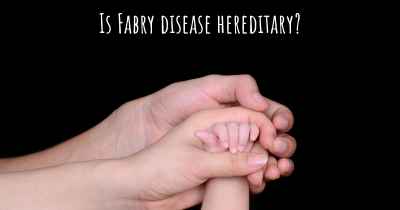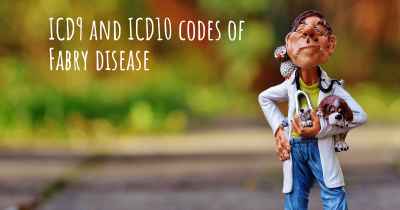Which are the causes of Fabry disease?
See some of the causes of Fabry disease according to people who have experience in Fabry disease

Fabry disease is a rare genetic disorder that affects various organs and systems in the body. It is caused by mutations in the GLA gene, which provides instructions for producing an enzyme called alpha-galactosidase A (α-Gal A). This enzyme is responsible for breaking down a fatty substance called globotriaosylceramide (Gb3) or globotriaosylsphingosine (Lyso-Gb3).
1. Genetic Mutations: The primary cause of Fabry disease is the presence of mutations in the GLA gene. These mutations can lead to a deficiency or complete absence of α-Gal A enzyme activity. As a result, Gb3 and Lyso-Gb3 accumulate in various tissues and organs, causing cellular dysfunction and damage.
2. X-Linked Inheritance: Fabry disease follows an X-linked inheritance pattern, which means it primarily affects males. Females can also be affected, but the severity of symptoms varies due to X-chromosome inactivation. Males inherit the mutated gene from their mothers, who are typically carriers of the disease.
3. Enzyme Dysfunction: The deficiency or absence of α-Gal A enzyme activity in individuals with Fabry disease leads to the accumulation of Gb3 and Lyso-Gb3 in various cells and tissues. This accumulation disrupts normal cellular processes and impairs the function of organs such as the kidneys, heart, skin, and nervous system.
4. Lysosomal Storage Disorder: Fabry disease is classified as a lysosomal storage disorder because the accumulated Gb3 and Lyso-Gb3 molecules are stored within lysosomes, which are cellular compartments responsible for breaking down waste materials. The excessive buildup of these substances in lysosomes contributes to the progressive damage observed in affected individuals.
5. Clinical Variability: The symptoms and severity of Fabry disease can vary widely among individuals. This variability is influenced by the specific mutation in the GLA gene, as well as other genetic and environmental factors. Some mutations result in a complete absence of α-Gal A enzyme activity, leading to more severe symptoms, while others may allow some residual enzyme function, resulting in milder manifestations.
6. Multi-Organ Involvement: Fabry disease affects multiple organs and systems in the body. The accumulation of Gb3 and Lyso-Gb3 can cause damage to the kidneys, heart, skin, nervous system, eyes, and gastrointestinal tract. The specific symptoms experienced by individuals can include kidney dysfunction, cardiac abnormalities, skin rashes, neuropathic pain, gastrointestinal issues, and ocular manifestations.
7. Disease Progression: Fabry disease is a progressive disorder, meaning that symptoms tend to worsen over time. The accumulation of Gb3 and Lyso-Gb3 gradually leads to increased cellular damage and dysfunction, resulting in the progression of organ involvement and the development of more severe symptoms. The rate of disease progression can vary among individuals.
8. Diagnosis: Fabry disease can be challenging to diagnose due to its rarity and the variability of symptoms. It often requires a combination of clinical evaluation, family history assessment, enzyme activity testing, and genetic analysis. Early diagnosis is crucial to initiate appropriate management strategies and interventions.
9. Treatment: While there is currently no cure for Fabry disease, various treatment options are available to manage symptoms and slow disease progression. Enzyme replacement therapy (ERT) is a common approach that involves intravenous infusions of synthetic α-Gal A enzyme to compensate for the deficiency. Additionally, supportive therapies may be employed to address specific organ involvement and symptom management.
10. Genetic Counseling: Genetic counseling plays a vital role in Fabry disease management. It helps individuals and families understand the inheritance pattern, assess the risk of passing on the disease, and make informed decisions regarding family planning. Genetic testing can identify carriers and affected individuals, enabling early intervention and appropriate support.
In conclusion, Fabry disease is caused by mutations in the GLA gene, leading to a deficiency or absence of α-Gal A enzyme activity. This results in the accumulation of Gb3 and Lyso-Gb3 in various organs and tissues, causing progressive damage and dysfunction. The disease follows an X-linked inheritance pattern and affects multiple organ systems. Early diagnosis, appropriate treatment, and genetic counseling are essential for managing Fabry disease and improving the quality of life for affected individuals.








